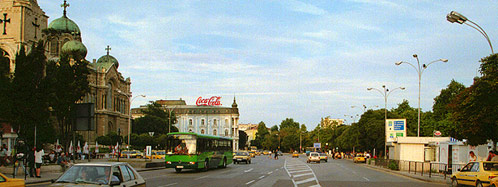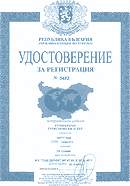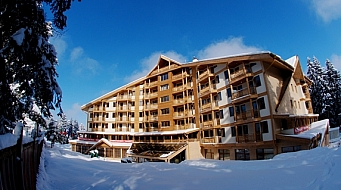Top offers
Varna







Varna
The town of Varna (about 350 thousands inhabitants) is the third biggest (after Sofia and Plovdiv) town in Bulgaria; it is a significant economical, cultural and tourist centre.
Varna is an ancient town. The prehistoric men wandered in theses places. There were Palaeolithic and Neolithic artefacts found here. It is in the Varna necropolis that the oldest gold in the world was found, which dates back to year 4000 B.C. this treasure consists of 2000 items, which are displayed at the exhibition in the Varna Archaeological museum. The first settlement in these parts, which was called Odessos, was founded in the VI century B.C. by young and energetic Greek colonizers from the town of Miletus. During the three-centuries Roman rule Odessos became one of the most significant trading centres of the empire. The remains of the Roman thermae (II-IV centuries A.C.) is one of the most exciting places of interest in the town. Unfortunately practically nothing has remained till nowadays from the marble lining and the rich decoration of thermae.
During the Byzantine rule the town still remained highly developed. The construction of churches and monasteries proves that Odessos was one of the first towns in Moesia that adopted Christianity. The name “Varna” first appears in the IV century and undoubtedly has Slavic origin. It is believed that the Slavs who were settling along the Provadiya River used to call it Vrana (“black crow”). The name of the river was transferred to the town. Since 681 A.D. Varna entered the boundaries of the First Bulgarian Kingdom founded by Khan Asparuh.
Of all the Black Sea towns Varna was the first to fall under the Turkish yoke in 1393. For five centuries the fortifications of the town played an important role in the defence system of the Ottoman Empire and withstood the attacks of the enemies. By the instigation of Pope Innocent IV the Polish and the Hungarian king Vladislav III undertook a campaign in 1443 against the Turks, which however turned out a defeat for the Christians. The King was killed in battle near Varna and his 20 thousand army was put to flight; all its army train passed into the possession of the Turks. One of the central streets in Varna was named after Vladislav Varnenchhik.
In XVIII-XIX centuries Varna becomes a busy port and trade centre. In 1840 many countries opened Consulates: Great Britain, France, Belgium, Russia and so on.
After the liberation from the Turkish yoke in 1878 the trade started developing even more intensely, what was connected with the construction of the port (1906).
Varna today is a big cultural centre. Every year “The Varna Summer” festival is being held, and thousand of artists and performers come from all over the world.
A walk around Varna is a pleasant entertainment for the tourists who are tired of sunbathing on the beach. Right in the centre of Varna on the Cyril and Methodius square stands the Repose of the Virgin Cathedral. It was built in the end of the XIX century and its frescoes were painted after the World War II. The Cathedral produces especially deep impression on weekends and on holy days when the famous across the country male-voice chorus sings in it. Between he clock-tower built in 1880 and the neo-baroque opera house there is a small market. There you can buy souvenirs, paintings, wood carvings, bijouterie and leather goods. The centre of Varna has been declared a pedestrian zone. The main street of the city “Knyaz Boris I” is the main shopping street in the town. It links the Cathedral with the “Black sea” hotel and the central entrance into the Marine Park. This tremendous park, with a total area about 80 hectares, sweeps away along the sea. There are Dolphinarium, Aquarium, Zoo, Planetarium and Terrarium in it.
The town of Varna (about 350 thousands inhabitants) is the third biggest (after Sofia and Plovdiv) town in Bulgaria; it is a significant economical, cultural and tourist centre.
Varna is an ancient town. The prehistoric men wandered in theses places. There were Palaeolithic and Neolithic artefacts found here. It is in the Varna necropolis that the oldest gold in the world was found, which dates back to year 4000 B.C. this treasure consists of 2000 items, which are displayed at the exhibition in the Varna Archaeological museum. The first settlement in these parts, which was called Odessos, was founded in the VI century B.C. by young and energetic Greek colonizers from the town of Miletus. During the three-centuries Roman rule Odessos became one of the most significant trading centres of the empire. The remains of the Roman thermae (II-IV centuries A.C.) is one of the most exciting places of interest in the town. Unfortunately practically nothing has remained till nowadays from the marble lining and the rich decoration of thermae.
During the Byzantine rule the town still remained highly developed. The construction of churches and monasteries proves that Odessos was one of the first towns in Moesia that adopted Christianity. The name “Varna” first appears in the IV century and undoubtedly has Slavic origin. It is believed that the Slavs who were settling along the Provadiya River used to call it Vrana (“black crow”). The name of the river was transferred to the town. Since 681 A.D. Varna entered the boundaries of the First Bulgarian Kingdom founded by Khan Asparuh.
Of all the Black Sea towns Varna was the first to fall under the Turkish yoke in 1393. For five centuries the fortifications of the town played an important role in the defence system of the Ottoman Empire and withstood the attacks of the enemies. By the instigation of Pope Innocent IV the Polish and the Hungarian king Vladislav III undertook a campaign in 1443 against the Turks, which however turned out a defeat for the Christians. The King was killed in battle near Varna and his 20 thousand army was put to flight; all its army train passed into the possession of the Turks. One of the central streets in Varna was named after Vladislav Varnenchhik.
In XVIII-XIX centuries Varna becomes a busy port and trade centre. In 1840 many countries opened Consulates: Great Britain, France, Belgium, Russia and so on.
After the liberation from the Turkish yoke in 1878 the trade started developing even more intensely, what was connected with the construction of the port (1906).
Varna today is a big cultural centre. Every year “The Varna Summer” festival is being held, and thousand of artists and performers come from all over the world.
A walk around Varna is a pleasant entertainment for the tourists who are tired of sunbathing on the beach. Right in the centre of Varna on the Cyril and Methodius square stands the Repose of the Virgin Cathedral. It was built in the end of the XIX century and its frescoes were painted after the World War II. The Cathedral produces especially deep impression on weekends and on holy days when the famous across the country male-voice chorus sings in it. Between he clock-tower built in 1880 and the neo-baroque opera house there is a small market. There you can buy souvenirs, paintings, wood carvings, bijouterie and leather goods. The centre of Varna has been declared a pedestrian zone. The main street of the city “Knyaz Boris I” is the main shopping street in the town. It links the Cathedral with the “Black sea” hotel and the central entrance into the Marine Park. This tremendous park, with a total area about 80 hectares, sweeps away along the sea. There are Dolphinarium, Aquarium, Zoo, Planetarium and Terrarium in it.
Articles
Varna Hosted the Biggest and Most Prestigious Maritime Event A Historic Amusement Park To Be Built Near Varna Eleventh International Workers' Sports Festival Martenitsi delighted passengers оn Varna Airport and Burgas Airport International Cultiral Calendar - Varna 2014 New interactive multimedia exhibition in Aladja Monastery Incredible success for "Royal Helena" on Mediterranean Tall Ships Regatta 2013 Events Calendar – Varna 2013 Flights Varna - Moscow in Winter 2012/2013 will be 3 times a week Theme park “Happy Land” will open in May, 2013 The 8th World Festival of Animated Film Varna 2012 Holiday in Bulgaria with sea adventure aboard the barquentine "Royal Helena" Varna Culture Events Calendar 2012Varna hotels reviews
- Graffit Gallery reviews Grand Hotel London reviews Rosslyn Dimyat Hotel Varna reviews Aqua Varna reviews Capitol reviews Cherno More reviews Divesta reviews Golden Tulip Varna reviews Marina Residence Boutique Hotel reviews Modus reviews Panorama reviews
- Alekta reviews Best Western Park reviews Boutique Splendid reviews JUST rooms and wine reviews Kristel reviews Odessos reviews Villa Sophia reviews Kamelia reviews Maxim reviews Orbita reviews Perfect reviews
Catalog of object in the resort
Museums
Restaurants
Aquaparks
Sport
Places of interest
Entertainments
Excursions
- Sofia – Rila Monastery – Rupite - Sofia Pleven - Sofia - Rila monastery - Plovdiv - Pleven Valley of Roses – Shipka – Veliko Tarnovo - Kazanlak Gabrovo - Shipka - Veliko Tarnovo - Gabrovo Balchik - Kaliakra - Balchik Nessebar - Nesebar Sozopol - the town of Salvation - Sozopol Aladzha Monastery - Varna - Golden sands Varna - Dolphinarium - Varna Land - Varna Varna City tour - Varna Bulgarian traditions Beauty - Dolni chiflik Bulgarian Land Phenomena - Varna Kamchia - The secrets of Longoza - Biala Veliko Tarnovo - Arbanasi - Veliko Tarnovo Golf Picnic - Varna Jeep Safari - Varna Sunlight cruise - Varna Fishing - Burgas Yacht Picnic - Varna Pirates Party - Burgas Istanbul - Burgas
MICE (Meeting, Incentive, Conference, Events)
Bulgaria Destinations
Tourism news
© 2001 — 2024 | All rights reserved | created by format.bg




